Choosing the Right Crankshaft Company: Your Ultimate Guide to Engine Power and Reliability
Have you ever wondered what truly separates a good engine from a legendary one? While components like pistons, heads, and camshafts often steal the spotlight, the unsung hero quietly doing the heaviest lifting is the crankshaft. It's the literal backbone of your internal combustion engine, converting the violent, linear motion of the pistons into the rotational force that powers your vehicle. Frankly speaking, the quality of your crankshaft can make or break your entire build. This is why your choice of Crankshaft company is one of the most critical decisions you'll make, whether you're rebuilding a daily driver or engineering a 2,000-horsepower monster.
It’s not just about buying a piece of metal; it’s about investing in precision engineering, metallurgical science, and decades of expertise. A subpar crankshaft can lead to catastrophic engine failure, while a high-quality one provides the foundation for reliable, consistent power. In this guide, we'll dive deep into what makes a great crankshaft manufacturer and how you can choose the right partner for your project.
The Hallmarks of a Top-Tier Crankshaft Manufacturer
Not all crankshafts are created equal, and the same is true for the companies that make them. A premier manufacturer distinguishes itself through a combination of superior materials, meticulous processes, and a forward-thinking culture. It's worth noting that the best companies are often specialists, deeply focused on the art and science of the crankshaft.
Material Mastery: Billet, Forged, and Cast
The first sign of a reputable company is its deep understanding of materials. The choice of material is fundamental to a crankshaft's strength, durability, and performance characteristics. There are three primary types:
- Cast Crankshafts: These are made by pouring molten iron or steel into a mold. They are the most common and cost-effective option, perfectly suitable for most stock and mild-performance street applications. However, the casting process can leave behind microscopic porosities, making them less suitable for high-stress, high-RPM environments.
- Forged Crankshafts: Forging involves taking a solid piece of steel (often 4340 or a similar alloy) and heating it until it's malleable. It's then hammered or pressed into shape. This process aligns the steel's grain structure, resulting in a part that is significantly stronger and more durable than a cast equivalent. This is the go-to for serious performance builds.
- Billet Crankshafts: This is the pinnacle of crankshaft manufacturing. A billet crank starts as a solid, cylindrical piece of high-grade steel (like 4340 or even more exotic alloys like 300M). A CNC machine then meticulously carves the crankshaft out of this solid bar. The advantage here is absolute control over the design and the use of the highest quality, most consistent material. When you're searching for billet vs forged crankshaft suppliers, you'll find that billet is often reserved for the most extreme racing applications where custom strokes and ultimate strength are required.
A great company won't just sell you the most expensive option; they'll consult with you to understand your horsepower goals, RPM range, and application to recommend the right material.
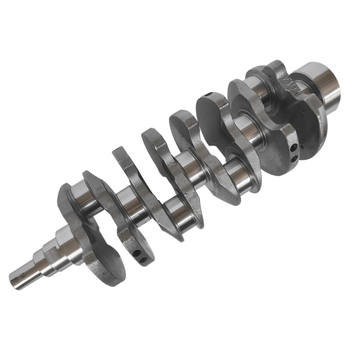
Precision Engineering and Machining
In my experience, material is only half the battle. The other half is precision. We're talking about tolerances measured in the ten-thousandths of an inch. A top-tier crankshaft company invests heavily in state-of-the-art equipment, like multi-axis CNC machines, and employs highly skilled machinists.
Key aspects of precision include:
- Journal Sizing and Finish: The surfaces where the connecting rods and main bearings ride must be perfectly round and have an incredibly smooth finish to ensure proper lubrication and minimize friction.
- Balancing: An unbalanced crankshaft will create destructive vibrations at high RPMs, robbing power and potentially destroying bearings. Advanced companies use dynamic, multi-plane balancing to ensure the crank spins as smoothly as a top.
- Stroke Consistency: Every journal must be the exact same distance from the crankshaft's centerline to ensure each cylinder has the same displacement and power potential.
A Culture of Innovation and Testing
The best don't rest. They are constantly pushing the envelope through rigorous research and development. This includes using Finite Element Analysis (FEA) software to digitally simulate stresses and optimize designs for strength while reducing weight. They also perform destructive testing on their products to validate their engineering and find the true limits of their materials and designs. This commitment to continuous improvement is what separates a mere supplier from a true engineering partner.
Custom vs. Off-the-Shelf: Finding the Right Fit for Your Project
One of the biggest decisions you'll face is whether to go with a standard, off-the-shelf crankshaft or invest in a custom piece. The right answer depends entirely on your goals, your engine, and your budget.
When an Off-the-Shelf Crankshaft is Enough
Let's be honest, not every build needs a full-custom, billet masterpiece. For the vast majority of engine rebuilds and moderate performance upgrades, a high-quality forged crankshaft from a reputable manufacturer's catalog is more than sufficient. These "shelf" parts are engineered for popular engine families (like the Chevy LS, Ford Coyote, or Dodge Hemi) and offer a fantastic blend of strength and value.
The main advantages are availability and cost. You can often have one delivered in days, and it will be significantly less expensive than a custom-made part. For builds under, say, 800-1000 horsepower (depending on the engine), a quality forged crank is the smart choice.
The Power of Custom Crankshaft Design
This is where things get exciting. A custom crankshaft design opens up a world of possibilities for those pushing the limits. Are you building a unique stroker engine? Trying to fit a modern crank design into a vintage block? Aiming for a specific displacement in a class-restricted racing series? This is where custom comes in.
The process involves working directly with the company's engineers. You'll discuss your goals, and they will design a crankshaft specifically for you, allowing you to specify:
- Stroke Length: Change your engine's displacement to increase torque or meet class rules.
- Journal Sizes: Use non-standard rod or main bearing sizes for added strength or to fit a specific block.
- Counterweight Design: Optimize the counterweights for a specific piston and rod combination, leading to a smoother, more efficient rotating assembly.
- Material Choice: Select ultra-premium materials for maximum strength in extreme applications like Top Fuel or Pro Mod.
This is a collaborative process. You're not just a customer; you're a partner in creating the heart of your engine.
Key Questions to Ask Any Potential Crankshaft Company
So, you're ready to make a choice. How do you vet a potential supplier? By asking the right questions. A transparent and knowledgeable company will be happy to answer them. Here’s a checklist to get you started:
- What is your primary manufacturing process and where do you do it? Do they forge in-house? Do they source forgings and do the finish machining? Understanding their supply chain is crucial.
- What specific steel alloys do you use for your forged and billet cranks? A good answer is "4340 chromoly steel" or better, not just "high-strength steel."
- Can you detail your quality control process? Ask about their inspection steps, what tolerances they hold for journal size and roundness, and how they verify material quality.
- How do you balance your crankshafts? Do they balance to a specific gram-weight? Do they use multi-plane dynamic balancing?
- What is your experience with my specific engine application? This is especially important for less common engines. You want a company that understands the nuances of your platform.
- Who are some of the top engine builders or race teams that use your products? While some may have NDAs, many top-tier performance crankshaft manufacturers are proud of their clientele.
- What kind of post-sale support and warranty do you offer? A company that stands behind its product is a company you can trust.
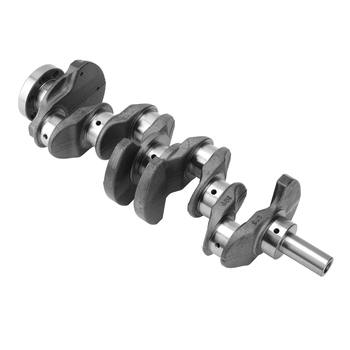
The Future of Crankshaft Technology and Manufacturing
The world of engine performance never stands still, and crankshaft technology is no exception. A forward-thinking Crankshaft company is already looking at and investing in the next generation of innovations that will shape the engines of tomorrow.
Lighter, Stronger Materials
While 4340 steel is the current workhorse, metallurgists are constantly developing new alloys with superior strength-to-weight ratios. We're seeing more use of ultra-clean vacuum-melt steels and advanced heat-treatment processes like nitriding and cryo-treating to enhance surface hardness and fatigue life. In the future, we may even see metal matrix composites that offer the strength of steel at a fraction of the weight, though that is still on the distant horizon.
The Role of AI and Advanced Simulation
Interestingly enough, the biggest leaps forward may come from the digital world. The use of AI in conjunction with Finite Element Analysis (FEA) is changing the game. Engineers can now run thousands of design simulations in a matter of hours, allowing an AI to progressively optimize a crankshaft's shape. It can add material where stress is high and remove it where it's not needed, resulting in designs that are both stronger and lighter than what a human alone could conceive.
Partnering for Peak Performance
At the end of the day, choosing a crankshaft is far more than a simple transaction. It's an investment in the heart and soul of your engine. The difference between a mid-tier supplier and a world-class engineering partner can be measured in reliability, horsepower, and peace of mind.
By focusing on material science, precision machining, and a collaborative spirit, you can find a Crankshaft company that doesn't just sell you a part, but partners with you to achieve your performance goals. Take your time, do your research, ask the tough questions, and you’ll lay the foundation for an engine that is not just powerful, but reliably powerful for years to come.
For more detailed information, please visit our official website:Crankshaft company
About the author: Marcus 'Marc' Thorne is a lead engine builder and performance consultant with over 25 years of hands-on experience in the high-performance automotive industry. Specializing in custom engine design and rotating assembly optimization, Marc has built power plants for everything from championship-winning race cars to high-horsepower street machines. He is passionate about sharing his deep knowledge of mechanical engineering and material science to help enthusiasts build more powerful and reliable engines. ---
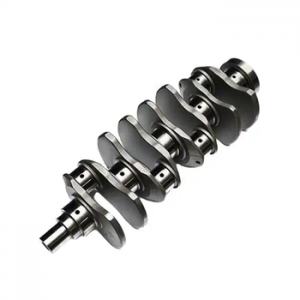 Crankshaft Distributor: The Un
Crankshaft Distributor: The Un
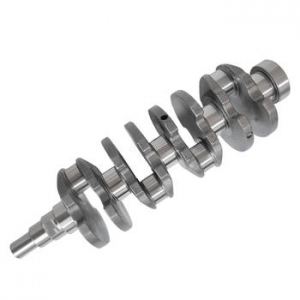 The Ultimate Guide to Sourcing
The Ultimate Guide to Sourcing
 Power Your Business: A Deep Di
Power Your Business: A Deep Di
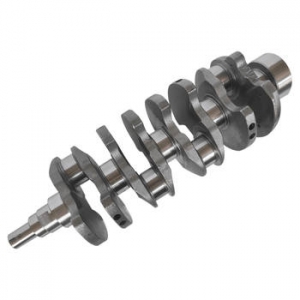 Choosing the Right Crankshaft
Choosing the Right Crankshaft
